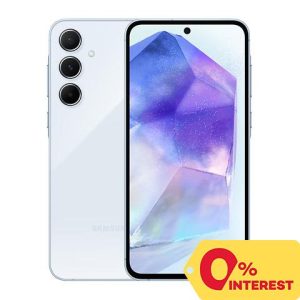When is the best time to visit?
Which destinations do I want to explore?
What’s my budget?
Do I need a visa to enter the Philippines?
What is the mode of transportation in the Philippines?
When is the best time to visit?
The weather in the Philippines is indeed unpredictable, but understanding the general patterns can help you plan your trip effectively.
Dry Season (November to May)
This is the best time to visit, as the weather is generally sunny and pleasant.
Cool Weather (December to February)
These months bring slightly cooler temperatures, making it ideal for exploring both cities and outdoor attractions without the intense tropical heat.
Hot and Dry Weather (March to May)
These months can be quite warm, especially in April and May, perfect for beach trips and water activities.
Rainy Season (June to October)
This month brings frequent rains and the possibility of typhoons, particularly from July to September. While some days can be sunny, it’s wise to check weather forecasts and stay updated on advisories if traveling during this time.
Which destinations do I want to explore?
For Adventure Destinations
Palawan
El Nido– Kayak through stunning limestone lagoons, snorkel in turquoise waters, and explore hidden beaches.
Coron – Dive into World War II shipwrecks, swim in Kayangan Lake, and relax in Maquinit Hot Springs.
Cebu
Kawasan Falls – Experience canyoneering and cliff jumping at this famous multi-tiered waterfall.
Moalboal – Witness the Sardine Run, swim with turtles, and go island hopping
Oslob – Swim with gentle whale sharks.
Siargao Island
Known as the surfing capital of the Philippines, enjoy Cloud 9 waves or try island hopping to nearby Naked Island and Sugba Lagoon.
Batanes
Trek through rolling hills, bike along coastal roads, and take in the raw beauty of Basco’s landscapes.
Mount Apo (Davao)
Climb the highest peak in the Philippines for an exhilarating hiking experience.
For Culinary Adventure
Pampanga
Known as the Culinary Capital, Pampanga offers a variety of flavorful dishes that showcase traditional Filipino cooking.
Must-Try Dishes– Sisig, Pampanga longganisa, betute (stuffed frog), camaru (crickets), tibok-tibok.
Bacolod
Bacolod is a paradise for grilled food lovers and dessert enthusiasts.
Must-Try Dishes– Chicken inasal, piyaya (sweet flatbread), and napoleones (pastry).
Cebu’s cuisine is as diverse as its attractions, known for sweet, savory, and unique dishes.
Must-Try Dishes– Lechon Cebu, puso (hanging rice), ngohiong (local spring rolls).
Davao
Davao is the perfect destination for exotic flavors and tropical fruit lovers.
Must-Try Dishes– Kinilaw (ceviche), grilled tuna panga (jaw), durian candy, and pomelo.
Bicol
Bicol is the land of spicy and coconut-based dishes, perfect for adventurous palates.
Must-Try Dishes– Bicol Express, laing (taro leaves in coconut milk), and pinangat.
Vigan
Vigan combines history and culinary artistry, offering unique flavors inspired by its Spanish heritage.
Must-Try Dishes– Vigan longganisa, bagnet (crispy pork belly), and empanada.
For Cultural and Heritage Destinations
Vigan (Ilocos Sur) – Walk the cobblestone streets of Calle Crisologo, explore ancestral houses, and ride a traditional kalesa (horse-drawn carriage).
Intramuros (Manila) – Visit Fort Santiago, San Agustin Church, and Casa Manila to learn about the Spanish colonial era.
Sagada (Mountain Province) – Discover the Hanging Coffins, explore caves, and participate in local weaving traditions.
Taal Heritage Town (Batangas) – Tour the well-preserved Spanish colonial houses and the Taal Basilica.
Davao – Visit the Kadayawan Village to experience the cultures of indigenous tribes and try local delicacies.
For Nature and Scenic Spots
Banaue Rice Terraces (Ifugao) – A UNESCO World Heritage Site, these ancient terraces offer breathtaking views and a glimpse into Ifugao culture.
Chocolate Hills (Bohol) – Marvel at over 1,200 unique limestone hills that turn chocolate-brown during the dry season.
Pagsanjan Falls (Laguna) – Take a thrilling boat ride through a gorge to reach this majestic waterfall.
Lake Sebu (South Cotabato) – Experience the serene lake, visit T’boli communities, and zipline over majestic waterfalls.
For Beach and Marine Life for Relaxation
Boracay – Enjoy powdery white sand beaches, vibrant nightlife, and water sports like parasailing and kiteboarding.
Malapascua Island (Cebu) – Dive with thresher sharks and explore colorful coral reefs.
Camiguin – Visit volcanic hot springs, sandbars, and beautiful waterfalls.
For Festivals and Local Celebrations
Sinulog Festival (Cebu) – A vibrant celebration of dance and music held every January.
Ati-Atihan Festival (Aklan) – Known as the “Mother of All Philippine Festivals,” it features colorful costumes and street parades.
Pahiyas Festival (Lucban, Quezon) – Celebrate the bountiful harvest with houses adorned with colorful rice decorations in May.
For Off-the-Beaten-Path Destinations
Biri Island (Northern Samar) – Famous for its striking rock formations shaped by the wind and sea.
Siquijor – Known as the mystical island, with stunning waterfalls, caves, and a unique folklore culture.
Balabac (Palawan) – A hidden paradise of untouched beaches, crystal-clear waters, and rich marine biodiversity.
What’s my budget?
The Philippines is a fantastic travel destination for budget-conscious travelers, offering a blend of stunning natural landscapes, rich culture, and vibrant cityscapes. Here’s a breakdown of typical costs for food, accommodation, and activities to help you budget your trip.
For Food
Filipino cuisine is delicious and affordable, catering to a wide range of tastes.
Street Food – A meal from a street vendor, like skewers, fish balls, or banana cue, can cost as little as ₱20–₱50 ($0.40–$1).
Local Restaurants – Enjoy hearty meals like Adobo or Sinigang for around ₱100–₱250 ($2–$5).
Mid Range Dining – Restaurants in malls or tourist areas may cost ₱300–₱800 ($6–$16) per meal.
Luxury Dining – Fine dining experiences in upscale restaurants or resorts can cost ₱1,000+ ($20+).
Tip: Try carinderias (local canteens) for authentic Filipino dishes at unbeatable prices.
For Activities and Experiences
From island-hopping to cultural experiences, activities in the Philippines are relatively affordable.
For Transportation
Domestic Flights – Estimated Cost: ₱1,500 and up ($30 and up) for a one-way trip.
Ferries and RoRo Ships – Estimated Cost: ₱200–₱2,000 ($4 and up) per trip.
Buses – Estimated Cost: ₱200 and up ($4 and up) for a one-way trip.
Jeepneys – Estimated Cost: ₱13 and up ($0.22 and up) per ride.
Tricycles – Estimated Cost: ₱20 and up ($0.40 and up) per trip.
Taxi Cost – ₱40–₱200 ($1–$4) base fare, plus an additional cost per kilometer.
Grab Ride – Estimated Cost: ₱100 and up ($2 and up), depending on distance and demand.
UV Express Vans – Estimated Cost: ₱55 and up ($1 and up) per trip, depending on the distance.
Fuel Cost – ₱55 and up ($1 and up) per day, depending on usage.
MRT/LRT – Estimated Cost: ₱15 and up ($0.30 and up) per trip.
Motorbike Rentals – Daily Rental Cost: ₱300 and up ($6 and up), depending on the rental location.
For Accommodation
The cost of accommodation depends on the location, type, and level of comfort:
Backpacker Hostels – Dorm beds start at ₱400–₱800 ($8–$16) per night.
Budget Hotels – Expect to pay ₱1,000–₱2,000 ($20–$40) for a private room.
Mid-Range Hotels – Comfortable stays cost ₱2,000–₱4,000 ($40–$80) per night.
Luxury Resorts – Beachfront resorts in Boracay or Palawan can range from ₱5,000–₱15,000+ ($100–$300+).
Tip: From island hopping to cultural experiences, activities in the Philippines are relatively affordable.
Island Hopping – Costs ₱500–₱2,000 ($10–$40) per person, depending on the package and destination.
Entrance Fees – Most tourist attractions cost ₱50–₱300 ($1–$6).
Tips for Saving Money
Travel Off-Peak – Avoid December, April, and Holy Week when prices surge.
Haggle – Bargaining is common in markets and for tricycle rides.
Eat Local – Choose local eateries over international chains to save money and experience authentic flavors.
Do I need a visa to enter the Philippines?
Check the list of countries that can enter the Philippines without a visa for a maximum stay of 30 days-
Andorra, Angola, Antigua and Barbuda, Argentina, Australia, Austria, Bahamas, Bahrain, Barbados, Belgium, Belize, Benin, Bhutan, Bolivia, Botswana, Brazil, Brunei Darussalam, Bulgaria, Burkina Faso, Burundi, Cambodia, Cameroon, Canada, Cape Verde, Central African Republic, Chad, Chile, Colombia, Comoros, Congo, Costa Rica, Côte d’Ivoire, Croatia, Cyprus, Czech Republic, Democratic Republic of the Congo, Denmark, Djibouti, Dominica, Dominican Republic, Ecuador, El Salvador, Equatorial Guinea, Eritrea, Estonia, Ethiopia, Fiji, Finland, France, Gabon, Gambia, Germany, Ghana, Greece, Grenada, Guatemala, Guinea, Guinea-Bissau, Guyana, Haiti, Honduras, Hungary, Iceland, Indonesia, Ireland, Israel, Italy, Jamaica, Japan, Kazakhstan, Kenya, Kiribati, Kuwait, Kyrgyzstan, Lao People’s Democratic Republic, Latvia, Lesotho, Liberia, Liechtenstein, Lithuania, Luxembourg, Madagascar, Malawi, Malaysia, Maldives, Mali, Malta, Marshall Islands, Mauritania, Mauritius, Mexico, Micronesia, Monaco, Mongolia, Morocco, Mozambique, Myanmar, Namibia, Nepal, Netherlands, New Zealand, Nicaragua, Niger, Norway, Oman, Palau, Panama, Papua New Guinea, Paraguay, Peru, Poland, Portugal, Qatar, Republic of Korea, Romania, Russia, Rwanda, Saint Kitts and Nevis, Saint Lucia, Saint Vincent and the Grenadines, Samoa, San Marino, São Tomé and Príncipe, Saudi Arabia, Senegal, Seychelles, Singapore, Slovak Republic, Slovenia, Solomon Islands, South Africa, Spain, Suriname, Swaziland, Sweden, Switzerland, Tajikistan, Thailand, Togo, Trinidad and Tobago, Tunisia, Turkey, Turkmenistan, Tuvalu, Uganda, United Arab Emirates, United Kingdom of Great Britain and Northern Ireland, United Republic of Tanzania, United States of America, Uruguay, Uzbekistan, Vanuatu, Vatican, Venezuela, Vietnam, Zambia, Zimbabwe.**
Special Note–
- Nationals of Brazil and Israel are allowed a stay of 59 days based on existing agreements.
Visa-Free Entry for Shorter Durations
14 Days-
- Holders of Hong Kong Special Administrative Region (SAR) passports.
- Holders of Macau Special Administrative Region (SAR) passports.
7 Days-
- Holders of Macau-Portuguese passports.
- Holders of Hong Kong British passports.
Site Reference- https-//dfa.gov.ph/list-of-countries-for-21-day-visa
NOTE- If you plan to stay longer, you can extend your visa at immigration offices here.
What is the mode of transportation in the Philippines?
The Philippines has a mix of transportation methods.
Domestic flights are the fastest way to cover long distances between major islands. Popular carriers include Philippine Airlines, Cebu Pacific, and AirAsia, which offer frequent flights to key destinations. These flights are ideal for trips like Manila to Cebu, Manila to Palawan, or Cebu to Davao.
Ferries and RoRo (Roll-On/Roll-Off ships) are essential for island hopping or traveling between nearby islands. Operators like 2GO Travel connect popular routes such as Cebu to Bohol or Manila to Coron. RoRo ships allow passengers to bring vehicles, making them perfect for road trips.
Buses connect cities and provinces, such as Manila to Baguio or Cebu to Moalboal. You can choose between air-conditioned and regular buses, depending on your budget and comfort preferences.
For Local and City Travel
Traveling within cities and towns introduces you to iconic and practical transportation modes.
Jeepneys
A symbol of Filipino culture, these colorful, repurposed military jeeps operate on fixed routes. Ask locals for help understanding routes and fares, as signage can be tricky. Jeepneys are an extremely affordable option, but expect a lively, crowded ride.
Tricycles
These are motorcycles with sidecars, commonly used for short distances in both urban and rural areas. Perfect for quick trips, such as traveling from your hotel to a nearby market. Rates vary by location, but they’re usually affordable. Negotiate for fair pricing in tourist areas.
Taxis and Ride-Hailing Apps
These are widely available in cities like Manila, Cebu, and Davao. Use metered taxis or agree on a fare before starting the ride. Ride-hailing apps like Grab offer fair pricing and easier navigation.
UV Express Vans
These shared vans operate on fixed routes that connect nearby cities or towns. They are slightly more expensive than buses but quicker and more direct.
Buses and Minibuses
These are common for short- and medium-distance travel within cities or between towns. Air-conditioned buses are more comfortable, while regular buses are cheaper.
MRT/LRT (Metro Rail Transit and Light Rail Transit)
Available in Metro Manila, these trains provide a faster alternative to bypass the city’s notorious traffic. Though limited in coverage, they are effective for destinations along major transport corridors.
Motorbike Rentals
Available in tourist spots like Siargao, Palawan, or Bohol, renting a motorbike is a fun and convenient way to explore. Make sure you are comfortable riding in diverse road conditions before renting one.
For Alternative and Traditional Transport
Habal-Habal (Motorcycle Taxi)
A motorcycle taxi commonly used in mountainous or rural areas where larger vehicles can’t pass. It can carry multiple passengers (and sometimes goods) on a single bike! Tip- Hold on tight—it’s a thrilling ride.
Pedicabs
These bicycle-powered rickshaws with sidecars are used for short distances in smaller towns or quiet neighborhoods. They are ideal for eco-friendly, leisurely trips around town.
Bangkas (Traditional Boats)
Outrigger boats are popular for island hopping and short sea journeys. They are commonly found in places like Palawan, Cebu, and Siargao, where they are perfect for exploring hidden beaches and lagoons.
If you have more questions, feel free to like my Facebook page at https//www.facebook.com/HowPaigeGonSan and send me a message. Safe travels!




